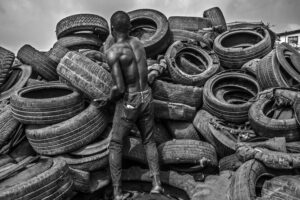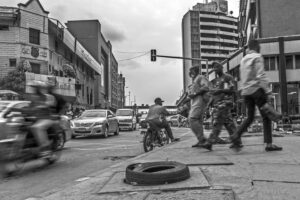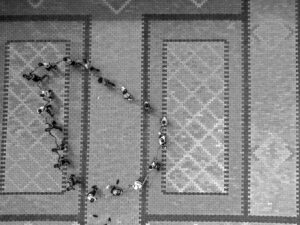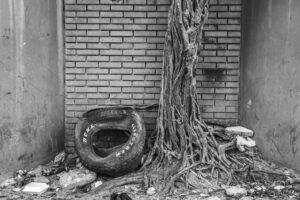My project, Pneumacity: “A Tire Never Dies,” seeks to highlight the end-of-life journey of tires, focusing on their transformation and impact within the bustling cityscape of Lagos. From the meticulous work of road vulcanizers—who fix tires with the precision of surgeons—to the various ways tires are upcycled or discarded, this project examines the environmental challenges posed by these non-degradable objects. It also explores the opportunities presented by tire recycling, such as their use in creating playground floor tiles.
“In Nigeria, a tire never dies,” one resident of Lagos told us. All those tires lying in dumps are not really wastes; they can either go through transformation into something of worth or utility to man.
Pneumacity follows the innumerable tracks that tires leave through the economy and ecology of Lagos, a city of some 20 million people who daily host some two million vehicles on their roadways. Once slipped from cars, buses, and lorries, tires could retain their shape but take on a completely different use—platforms for portable generators, display stands for the sale of market produce, or even an informal marker of space on road or beach. In their entirety, they may be upcycled, refashioned into quite different objects of furniture or art.
More precisely, the focus of the project is on informal cultures and livelihoods centered on tire-related labor, complex places of waste tires in street/road ecologies, and circular economies of repurposing.









